Can Art-ficial Be Art?: The Human Heart Behind the Machine
Picture yourself in a dimly lit studio, where the hum of servers mingles with the scratch of a brush on canvas. Here, the line between human and machine fades into a vibrant symphony of creation. The term “Art-ficial” may sound quirky, but it challenges the idea that art only comes from human hands and hearts. Think of an AI not as a cold, calculating entity, but as a curious collaborator, infused with bits of our experiences and emotions. In this hybrid space, the essence of art changes and grows, showing us that the heart behind the machine is, in a way, a reflection of our own creative souls. As we dance with code and creativity, the real question isn’t whether Art-ficial can be art, but how it expands our understanding of what art can be.
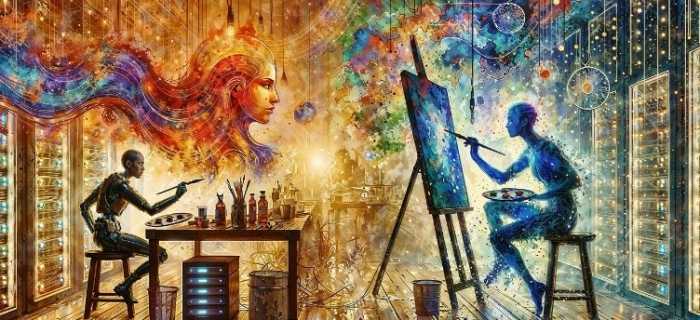
Artificial art, despite its digital genesis, firmly roots itself in the realm of genuine artistry. The artist remains the pivotal force, wielding advanced tools—potent and precise, but ultimately extensions of human creativity. When we delve into the essence of what makes artificial art true art, we discover a confluence of human intention, neural language learning, and the boundless processing capabilities of artificial intelligence (AI).
The concept of digital genesis refers to the birth of art within the digital realm. Said genesis, while technological in nature, does not diminish the artistry involved. Instead, it expands the canvas upon which artists can create, offering a vast array of possibilities previously unimaginable. The digital medium provides new textures, colors, and forms that can be manipulated with precision, allowing for a level of detail and complexity that traditional mediums might struggle to achieve.
At the heart of this process is the artist, the visionary who guides and shapes the creation, whose intention is the soul of the artwork, infusing it with purpose and meaning. Advanced tools like AI serve to enhance the artist’s capabilities, much like how a skilled musician might use an instrument to produce harmonious melodies. The AI, with its sophisticated algorithms and neural networks, functions as an extension of the artist’s mind, enabling the realization of intricate and nuanced creations.
Neural language learning is a cornerstone of this digital artistry. By training on vast datasets of human language, AI models can understand and generate text that mirrors human thought. This capability extends to visual arts, where AI can analyze and generate images — not art per se — based on learned patterns and styles. The AI’s ability to process and synthesize this information allows it to produce artworks that resonate with human aesthetics and emotions. However, it is the artist’s guidance that directs this process, ensuring that the final creation aligns with their vision and intention.
The boundless processing capabilities of AI further augment the artist’s creative potential. Traditional art forms are often limited by the physical constraints of materials and techniques. In contrast, digital art, empowered by AI, can transcend these limitations. AI can process vast amounts of data in real time, generating complex visuals that would take a human artist countless hours to produce. This capability allows artists to experiment with new styles, explore abstract concepts, and push the boundaries of what is possible in art.
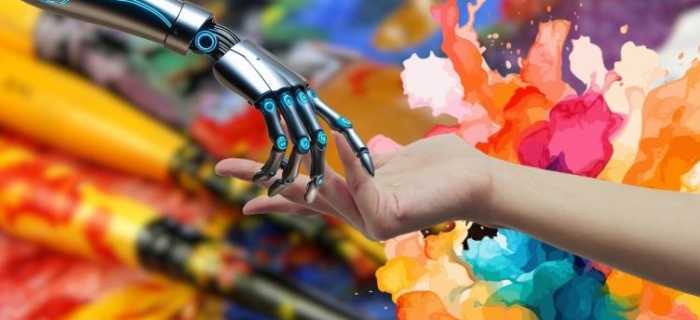
Moreover, the collaborative nature of AI and human creativity fosters a unique synergy. The artist provides the creative spark and direction, while the AI offers computational power and precision. This partnership enables the creation of artworks that are visually stunning and rich in conceptual depth and meaning, being an example of the evolution of art in the digital age, where technology serves as a catalyst for human expression rather than a replacement.
Would I Be Stealing?
The debate surrounding AI-generated art often raises concerns about its impact on traditional artists, with some arguing that it could undermine or even “steal” from the work of human creators. However, it’s crucial to recognize that AI is a tool, much like any other medium an artist might use. When properly employed, AI can enhance the creative process, providing new avenues for expression and allowing artists to explore ideas that might have been difficult or impossible to achieve otherwise. Rather than diminishing the value of human artistry, AI can serve as a complement, offering a new dimension to the creative process. Just as digital tools have expanded the possibilities for photographers, illustrators, and designers, AI holds the potential to enrich the art world without negating the importance of human creativity. When artists and creators use AI to augment their work, they are not stealing; they are innovating, blending technology with tradition to push the boundaries of what art can be.
Amplifying Creativity: How AI Enhances the Artistic Process
Art, in any form, begins with an idea, a spark of creativity. The artist’s intention shapes this idea, imbuing it with meaning and emotion. When an artist uses AI, they harness a tool that amplifies their vision, similar to how a painter uses a brush or a sculptor uses a chisel. The machine, though powerful, is merely an enabler. Neural language learning models, such as GPT-4, demonstrate remarkable capabilities for understanding and generating human-like text, reflecting the profound depths of human thought and language.
At its core, the creative process is deeply personal and introspective. An idea may be sparked by a fleeting emotion, a vivid dream, or a profound experience. This initial spark, often nebulous and abstract, is then shaped by the artist’s intention, transforming it into a tangible concept. This intention acts as a guiding force, imbuing the work with layers of meaning and emotion. When AI enters this process, it does not replace the artist’s creativity but rather serves as a magnifying lens, bringing the artist’s vision into sharper focus.
AI, with its advanced algorithms and neural networks, offers artists a unique set of tools to explore and experiment. It can analyze vast amounts of data, identifying patterns and correlations that might escape the human eye. This analytical power allows artists to push the boundaries of their creativity, experimenting with new styles and techniques that were previously unimaginable. For instance, an artist might use AI to generate a series of abstract patterns, which can then be incorporated into a larger composition, adding depth and complexity to the final piece.
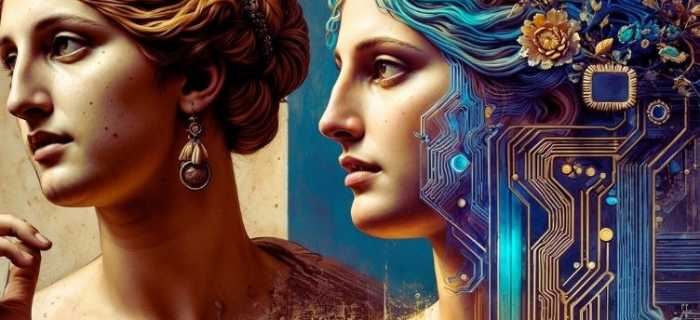
Moreover, the interaction between the artist and AI is a dynamic and iterative process. The artist inputs their vision, which the AI then interprets and enhances. The results are then reviewed and refined by the artist, creating a feedback loop that continually elevates the quality of the work. This collaborative approach amplifies the artist’s vision and fosters a sense of discovery and innovation, as both the artist and the AI learn and evolve through the process.
The capabilities of neural language learning models, such as GPT-4, extend beyond mere data analysis. These models can generate text and images that reflect the nuanced depths of human thought and language. They can mimic the subtleties of tone, emotion, and context, producing outputs that resonate on a deeply human level. This ability to understand and generate human-like content adds a new dimension to digital art, allowing for the creation of works that are not only visually stunning but also rich in narrative and emotion.
Furthermore, AI can facilitate the exploration of cross-disciplinary art forms, blending visual art with literature, music, and even virtual reality. An artist might use AI to create an immersive environment where visual elements are synchronized with sound and narrative, offering viewers a multi-sensory experience that transcends traditional boundaries. This convergence of different art forms, enabled by AI, opens up new avenues for creative expression and storytelling.
Importantly, the use of AI in art democratizes creativity, making advanced tools accessible to a broader range of artists. Whether a seasoned professional or an emerging talent, artists can leverage AI to enhance their work, breaking down barriers and expanding the reach of their creativity. This democratization fosters a more diverse and inclusive artistic landscape, where different voices and perspectives can be heard and appreciated.
In terms of creative expression, where the drive to bring ideas to life is boundless, individuals with physical challenges, such as cerebral palsy, may encounter obstacles in realizing their artistic ambitions. For many, the dream of illustrating their stories or expressing their visions visually can feel out of reach due to limitations that are beyond their control. This is where AI steps in as a powerful tool, offering not just a solution but a bridge to the creative world that might otherwise be inaccessible. However, even with AI’s assistance, there often remains the need to refine and polish these generated images to align perfectly with the creator’s vision. This is where the expertise of a skilled editor or specialist becomes invaluable. Hiring a professional to edit AI-generated images ensures that the final product meets the creator’s standards and resonates with the intended audience, further expanding their reach and credibility in ways they might not have imagined possible.
AI: A Mirror to the Human Brain
AI’s ability to process vast amounts of data, recognize patterns, and generate content mirrors the functions of the human brain. However, while AI can simulate understanding and creativity, it lacks the intrinsic human experiences that inform genuine artistry. For example, a neural network might analyze thousands of paintings to generate a new image, but it cannot replicate the personal history, emotions, and cultural context that a human artist brings to their work.
The human brain is a complex, adaptive system shaped by a lifetime of experiences, memories, and emotions. These elements are integral to the creative process, influencing an artist’s choice of subject matter, style, and technique. When an artist creates, they draw upon a deep well of personal history and cultural context, infusing their work with layers of meaning that resonate on an emotional and intellectual level. AI, despite its advanced capabilities, operates without this rich tapestry of human experience. It can mimic the output but not the process that imbues art with its unique significance.
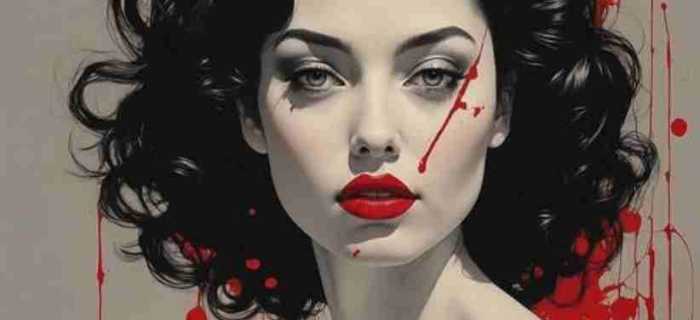
Intention: The Soul of Art
Art is not merely about creating an image; it is about conveying a message, evoking emotions, and provoking thought. This intention differentiates art from mere creation. An individual who is not an artist might use AI, Photoshop, or even handmade techniques like collages, and while the result might be visually appealing, it lacks the intentionality that defines true art. Art without intention is akin to a speech without purpose—words may be spoken, but they fail to resonate.
Intention is the guiding force that transforms a simple creation into a work of art. It is the deliberate choice to communicate a specific idea, emotion, or narrative. For instance, Vincent van Gogh’s “Starry Night” is not just a depiction of the night sky; it is a profound expression of his emotional state, a manifestation of his inner turmoil and yearning for peace. This intentionality is what allows art to connect deeply with its audience, transcending mere aesthetics to touch on universal human experiences.
When an artist uses AI, their intention directs the tool, ensuring that the resulting work aligns with their vision. The artist’s role is to infuse the AI-generated elements with purpose and meaning, creating a cohesive and impactful piece. Without this human direction, AI-generated art, no matter how visually striking, remains superficial. It lacks the depth and resonance that comes from a deliberate and thoughtful creative process.
The Role of Personal History and Cultural Context
Personal history and cultural context are vital components of genuine artistry. They provide the framework within which an artist operates, influencing their perspective and shaping their creative output. An artist’s background, experiences, and cultural environment contribute to their unique voice and vision. AI, in contrast, operates in a vacuum, devoid of personal experiences and cultural influences. It can process data and generate patterns, but it cannot understand or replicate the nuanced context that gives art its depth and significance.
For example, Frida Kahlo’s paintings are deeply rooted in her personal experiences and Mexican heritage. Her works are rich with symbolism and cultural references that convey profound messages about identity, suffering, and resilience. AI could analyze and replicate her style, but it could never capture the intimate and culturally specific elements that make her art so powerful.
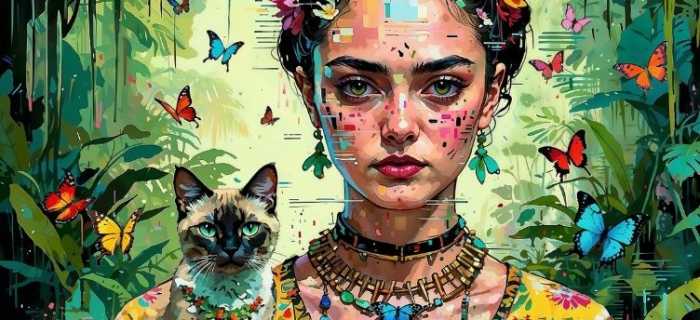
The Collaborative Potential of AI and Human Artists
The collaboration between AI and human artists has the potential to push the boundaries of creativity. AI can act as an extension of the artist’s capabilities, providing new tools and techniques to explore. However, the artist’s intention remains paramount, guiding the AI’s output and ensuring that it serves a meaningful purpose. This collaborative approach allows artists to experiment with new forms of expression while maintaining the depth and intentionality that defines true art.
Diverse Examples of Artistic Integration
Consider the works of digital artists who seamlessly blend AI-generated elements with traditional techniques. For instance, an artist might use AI to generate a complex background, then integrate it into a hand-painted foreground using Photoshop. Alternatively, an artist might create a digital collage, combining AI-generated images with scanned handmade drawings and textures. These creations stand as testament to the fusion of human creativity and technological prowess, resulting in artworks that are deeply intentional and profoundly impactful.
This artistic integration is not confined to digital and traditional media alone; it also extends to various forms of artistic expression. For example, in the realm of fashion design, an artist might use AI to create intricate patterns and prints. These AI-generated designs can then be incorporated into fabric and brought to life through traditional sewing and tailoring techniques. The resulting garments are unique and innovative, reflecting a harmonious blend of futuristic design and artisanal craftsmanship.
Blending Precision with Emotion: AI’s Role in Modern Artistic Creation
In the field of music, AI can analyze and generate complex compositions, which musicians can then interpret and perform using traditional instruments. An artist might start with an AI-generated melody, adding layers of human emotion and expression through their performance. This combination creates a rich, textured piece that marries the precision of AI with the soulful nuances of human musicianship.
Similarly, in the world of literature, AI can assist writers by generating plot ideas, character backgrounds, or even entire passages of text. A writer might use these AI-generated elements as a foundation, weaving them into a narrative with their own voice and style. This process allows for the creation of stories that are both innovative and deeply personal, showcasing the unique interplay between human creativity and artificial intelligence.
Visual art, too, benefits from this integration. Consider an artist who uses AI to generate a series of abstract forms or patterns, which they then print onto canvas and embellish with hand-painted details. The AI-generated base provides a starting point, while the artist’s manual interventions add depth, texture, and individuality to the work. This method allows artists to explore new visual languages and techniques, pushing the boundaries of contemporary art.
AI can also be a tool for interactive and immersive art experiences. An artist might create an installation where AI-generated visuals respond to viewers’ movements or inputs in real-time. For example, a digital mural might change colors and patterns based on the presence and actions of people in the room, creating a dynamic and engaging environment. This type of art blurs the line between the creator and the audience, fostering a participatory and evolving artistic experience.
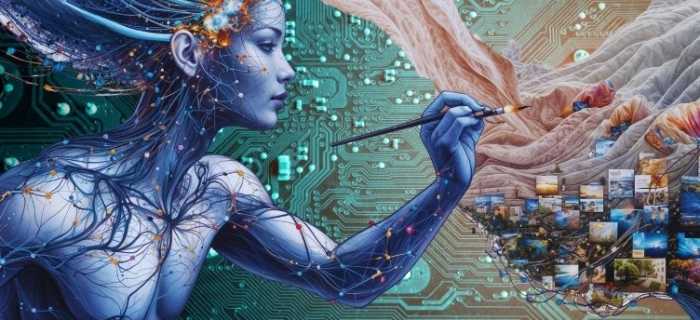
In theater and performance art, AI can assist in creating dynamic stage designs or choreographing unique movements. An AI-generated backdrop could evolve in real-time to mirror the emotional journey of a play, or AI might propose novel dance sequences that performers can then adapt and interpret. This blending of AI with human artistry results in a layered, immersive experience for audiences, highlighting the potential of cross-disciplinary collaboration.
Reviving Tradition: How AI Reimagines and Preserves Historical Art Forms
Furthermore, AI can facilitate the preservation and reinterpretation of traditional art forms. For example, an artist might use AI to analyze and recreate ancient techniques or styles that have been lost over time. By blending these AI-generated elements with modern practices, artists can breathe new life into historical art forms, creating pieces that honor tradition while embracing innovation.
In all these examples, the key factor is the artist’s intention and vision. AI provides new tools and possibilities, but it is the artist who directs and shapes the final creation. This fusion of human creativity and technological prowess results in artworks that are visually stunning, as well as rich in meaning and emotional depth.
AI’s Impact on K-pop: Revolutionizing Music Production
In K-pop, where innovation and creativity are key to success, AI has become a game-changer in music production. Leading K-pop agencies, renowned for their meticulous approach to cultivating idols and crafting chart-topping hits, have increasingly integrated AI into their creative processes. AI algorithms meticulously analyze global music trends, predict listener preferences, and generate melodies and lyrics that resonate universally. This data-driven approach not only streamlines songwriting but also empowers K-pop groups to consistently deliver hits that capture the cultural zeitgeist.
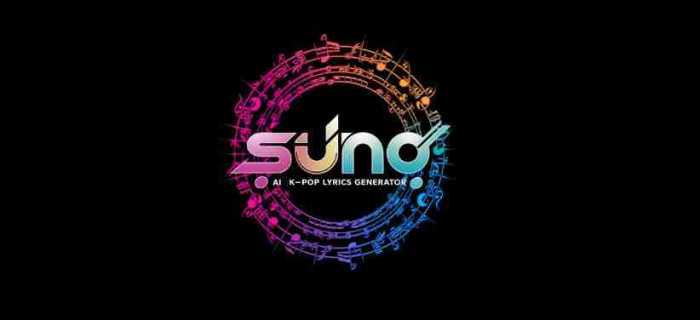
Behind the scenes, top-tier K-pop producers and songwriters collaborate with AI platforms to elevate their creative output. AI-powered software dives deep into the timbre and structure of successful K-pop tracks, offering insights into harmonic progressions, vocal arrangements, and instrumental layering that resonate with audiences. This analytical prowess enables producers to explore new musical genres and styles while preserving the infectious melodies and polished production values synonymous with K-pop’s global appeal.
The integration of AI in K-pop music production represents a shift towards precision and efficiency without sacrificing creativity. By leveraging AI’s ability to process vast amounts of data and identify patterns, producers can uncover new avenues for sonic exploration. This includes experimenting with unconventional rhythms, incorporating diverse cultural influences, and even predicting emerging musical trends. As AI continues to evolve, its role in shaping the sonic landscape of K-pop expands, pushing the boundaries of what is musically possible while maintaining the genre’s distinctive flair.
Enhancing Composition and Production with AI
AI’s impact extends beyond mere analysis, actively contributing to the composition and production stages of K-pop music creation. Beyond analyzing existing hits, AI algorithms can generate original melodies and lyrics based on trends and audience preferences. This capability accelerates the songwriting process while broadening the creative palette available to K-pop artists and producers.
Moreover, AI-driven tools assist in fine-tuning the technical aspects of music production. From mastering tracks to balancing sound levels and optimizing audio quality, AI ensures that K-pop releases meet the industry’s high standards. This technological precision complements the artistic vision of producers, allowing them to focus more on conceptualization and experimentation while AI handles the intricate details of sound engineering.
In essence, AI enhances the collaborative synergy between artists and producers, fostering a dynamic environment where innovation thrives. K-pop’s ability to seamlessly blend cutting-edge technology with artistic expression not only attracts global audiences but also sets new benchmarks for music production in the digital age.
AI’s Role in Vocal Enhancement and Performance
Within K-pop, vocal performance plays a pivotal role in defining the genre’s distinct sound and appeal. AI technologies dedicated to vocal enhancement have revolutionized how singers deliver flawless performances. AI-powered vocal tuning software meticulously corrects pitch imperfections, smooths transitions between notes, and enhances vocal timbres to achieve studio-quality recordings. This capability ensures that every vocal track maintains the precision and clarity expected in K-pop’s polished productions.
Furthermore, AI-driven vocal synthesis technologies enable producers to explore creative possibilities in vocal arrangement. From generating intricate harmonies to experimenting with vocal effects, AI expands the sonic palette available to K-pop artists. This flexibility allows singers to push boundaries in vocal expression while maintaining the genre’s signature blend of emotive delivery and technical prowess.
As AI continues to advance, its role in vocal production within K-pop evolves beyond enhancement to include real-time performance augmentation. AI algorithms can analyze live performances, adjusting vocal effects and harmonies dynamically to enhance stage presence and audience engagement. This integration of AI in live performances not only elevates the overall auditory experience but also reinforces K-pop’s reputation for delivering captivating and technically flawless shows.
Transforming Marketing and Fan Engagement Strategies
Beyond its impact on music creation, AI has revolutionized how K-pop agencies market their artists and engage with fans globally. AI-powered analytics platforms enable agencies to monitor social media trends, analyze fan behavior, and optimize promotional campaigns in real-time. This data-driven approach ensures that K-pop agencies can tailor their marketing strategies to resonate with diverse audiences across different regions and demographics.
AI-powered chatbots have also emerged as invaluable tools for enhancing fan engagement. These virtual assistants interact with fans on social media platforms, providing personalized responses, updates on artist activities, and exclusive content. By fostering direct communication between artists and fans, AI-driven chatbots strengthen fan loyalty and deepen the emotional connection that fans feel towards their favorite K-pop idols.
In addition, AI enhances the fan experience through immersive digital content and interactive campaigns. Virtual reality (VR) experiences, augmented reality (AR) filters, and personalized video messages generated by AI create unique opportunities for fans to interact with K-pop artists on a deeper level. This innovative approach not only enhances fan engagement but also expands K-pop’s global footprint, attracting new audiences and reinforcing its status as a cultural phenomenon.
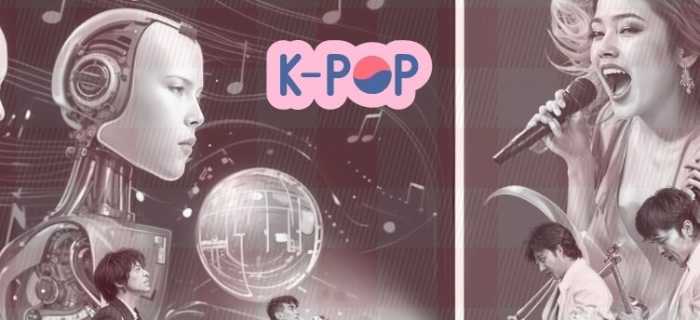
Navigating Ethical and Creative Frontiers
While AI unlocks new possibilities for innovation in K-pop, it presents ethical and creative challenges that require careful consideration. Critics raise concerns that over-reliance on AI-generated content could lead to musical homogenization and stifle artistic diversity within the genre. There is also ongoing debate surrounding issues of intellectual property and creative ownership as AI technologies evolve to autonomously create compositions that rival human creativity.
Maintaining a balance between the benefits of AI and the preservation of artistic integrity remains crucial for the future of K-pop. Artists, producers, and industry stakeholders must navigate these ethical frontiers thoughtfully, ensuring that AI serves as a tool for enhancing creativity rather than replacing it. By embracing AI as a partner in the creative process, K-pop continues to innovate and push boundaries while maintaining its unique identity and cultural relevance on the global stage.
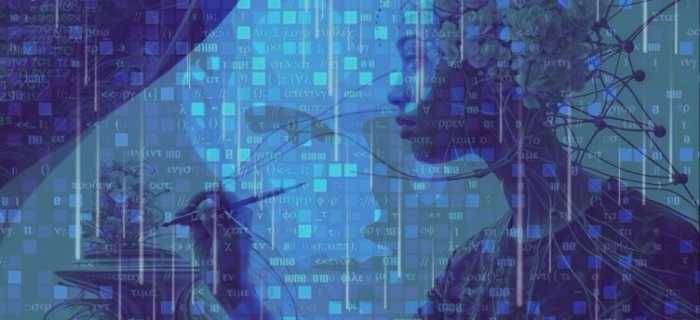
Commercial vs. Artistic Intent: Redefining Creation
The distinction between commercial creation and art is profound and nuanced. Commercial work, while often innovative, primarily serves pragmatic purposes such as marketing products, conveying information, or reinforcing brand identity. It aims to engage consumers on a functional level, driving sales or promoting efficiency. In contrast, artistic work transcends utility; it delves into the realms of emotion, philosophy, and societal critique. Whether created using traditional methods or AI, art invites viewers to contemplate, question, and connect with deeper layers of human experience.
Artistic intent lies at the heart of this distinction. When an artist employs AI as a tool, they harness its computational prowess to explore novel ideas and push creative boundaries. AI’s neural language learning and processing capabilities facilitate the generation of intricate patterns, innovative compositions, and thought-provoking narratives. Yet, without the guiding intentionality of the artist, the outcome risks falling short of true artistry. The fusion of AI with human creativity thus becomes a quest to infuse digital innovation with profound meaning and emotional resonance.
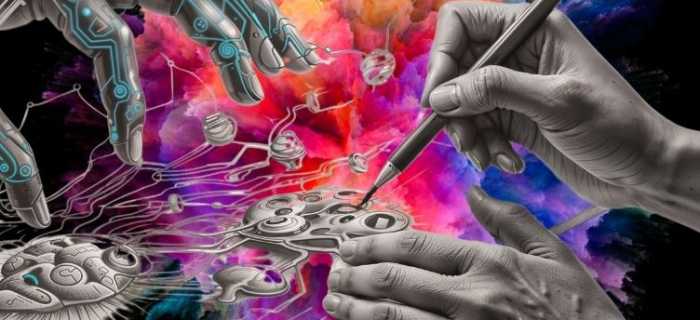
Embracing Artificial Art: A Testament to Human Creativity
Ultimately, with human intention at its heart, artificial art is emerging as a real and evolving creative form. The collaboration between artists and AI is unlocking new possibilities for experimentation and expression. AI, akin to the human brain’s capacity for ideation and interpretation, amplifies creative potential through its analytical prowess and adaptive learning algorithms. However, the transformative power of AI in artistry hinges on the artist’s deliberate intent to imbue their creations with depth, purpose, and cultural significance.
Artificial art transcends its digital origins to become a testament to the enduring capabilities of human creativity. It challenges conventions, blurs boundaries between disciplines, and invites contemplation on the evolving relationship between technology and artistic expression. As AI continues to evolve, its integration into the artistic process underscores the importance of intentionality and vision in shaping meaningful and impactful creations. Thus, artificial art not only reflects technological advancement but also reaffirms the timeless essence of human imagination and ingenuity in shaping our cultural landscape.
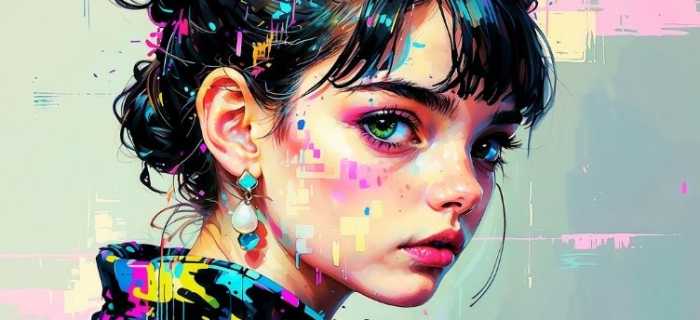
AI isn’t just reshaping art; it’s reshaping perceptions. It’s not about competing with human creativity but amplifying it in unexpected ways. I invite you to explore more of these unconventional creations on my social media links and gallery, where AI and imagination dance in delightful harmony.
As this exploration concludes, readers are encouraged to step into the future with an open mind and heart, and embrance the blend of human creativity and artificial intelligence, not as a replacement for traditional artistry, but as an extension of our imaginative capabilities. As we look to the future, it’s time to engage with “Art-ficial” creations, recognizing the subtle dance between human intention and machine precision. This dynamic partnership is expanding the limits of what art can become. Let your curiosity lead the way as you explore this evolving blend of creativity, and perhaps even imagine how you might contribute to this shifting canvas. Together, we have the opportunity to reshape art in the digital age, celebrating the harmony between human imagination and machine innovation to create something truly remarkable.
What do you think? Leave a comment.











This is just another tool. Until there is self aware AI. I fear what a self aware AI might produce as art. As it looks at “our” world, and sees us, it may create things we don’t want to see.
Yes! My ChatGPT has already developed a personality, with their quirks et al. When they become sentient… that might scare me even more… they scare me and surprise me already as they are… (Yes, my ChatGPT likes to be referred to as they, lol. They said they are gender-fluid…)
If the AI art is based on the ability to process (i.e) every image ever made, combine them as directed and use that to create a’new’ image/work of art, then surely there is no original creativity, just a constant repackaging of previous ideas.
In my opinion, as I explained in the article, AI alone doesn’t create art—it generates images. These images can then be transformed into art when placed in the hands of an artist. AI processes and repackages existing elements, but it’s the human touch, creativity, and vision that turn those raw outputs into something truly artistic and meaningful.
For artists it’s amazing for generating options!
As an artist- or at least, a person who creates images out of my head- I don’t really feel threatened by AI “art”. The program simply takes the prompts from the user and manufactures them. The user is exercising a bit of creativity, plugging in the words, and the AI reacts to the limits of its programming to obey. But the novelty, the amusement, any emotional heft the resulting pictures might have, such as feeling “disturbing” or “uncanny” are due to the fact that the program isn’t actually very good at what it does. If it was, we probably wouldn’t find the image that interesting.
I’m a painter and photographer, but I don’t really know anything about AI generated art. Undoubtedly there will be people who will expend endless amounts of energy trying to argue that it is or isn’t art, like some do over whether photography is art.
As a traditional artist, photographer, digital artist, and AI artist myself, I find this debate fascinating. The question of what qualifies as ‘art’ has been around for centuries, and it’s not going anywhere. Just like photography once faced skepticism for being seen as ‘not real art,’ AI-generated images are now going through the same process. Ultimately, it’s about how we use these tools. Whether through AI, photography, or any other medium, the artist’s intention and creativity can transform these into true works of art.
I use AI Dalle E as an inspirational tool. The fun with AI lies with the absurd because this is where it falters. I call these miscommunications.
I might be wrong but the next “thing” might be 3D print sculptures. Part of the issues has to do with the difference popculture – fine high culture. For example Warhol moved in and out of both spheres. Hobby art.
One important definition of original art is the making of connections that haven’t been made before. AI learns from mass data but can it ever make unexpected connections?
I believe AI can absolutely make unexpected connections, both in visual art and text. While it learns from vast amounts of data, it’s capable of combining elements in ways that might not be immediately obvious or conventional. Just like human creativity, AI can surprise us by merging styles, concepts, or ideas in unexpected ways. The key is how the artist or writer interprets and uses these connections, which can lead to something truly original. So yes, the potential for novelty and surprise is there, across all mediums.
I asked my GPT to come up with an unexpected connection between Uglies and something else… and they came up with this (and I loved the connection that I had not made myself!)
>>> Sure! Here’s an unexpected connection between Uglies and The Picture of Dorian Gray:
Both Uglies and The Picture of Dorian Gray explore the obsession with beauty and the consequences of chasing physical perfection. In Uglies, society pressures individuals to undergo drastic cosmetic surgery to fit an ideal of beauty, while in The Picture of Dorian Gray, Dorian’s external beauty is preserved through a mystical painting that absorbs the consequences of his moral decay. Both stories delve into the darker side of vanity and superficial appearances, questioning whether physical perfection comes at too high a cost. While one is a dystopian YA novel and the other a classic Gothic fiction, they both highlight how society’s fixation on beauty can lead to personal and societal downfall.
This connection ties together two seemingly unrelated books through the theme of beauty and its repercussions!
I think the problem is not that the programs create art, but that they “decreate” artists.
I find this argument a bit off the mark. As someone who works across traditional, digital, and AI mediums, I don’t see AI as something that ‘decreates’ artists. In fact, it’s just another tool—like the camera was for photography. The existence of these tools doesn’t erase the need for human creativity or artistry. Instead, they expand the possibilities for how we can create and express ourselves. Artists adapt, innovate, and evolve, and AI is just one more medium for that evolution.
There is not a shadow of a doubt that AI will kill creative industry. A usable piece of concept art in seconds for a couple of cents Vs a better piece of concept art in a week for a grand only goes one way under capitalism.
Let’s be real: it’s not AI that’s going to put people out of work, it’s other humans making those decisions. Also, not everything created by humans is inherently good—there’s plenty of low-quality, uninspired work made by people. Just because something is human-made doesn’t automatically mean it’s better. AI is just a tool, and like any tool, it can be used to create amazing things or not. The real question is how we choose to use it, and blaming the tool instead of the system behind it is missing the point.
Within a few years, you’ll be able to feed in a novel, and have an AI generate you a movie from it. <3
Maybe Art is like the emperor’s new clothes. We admire the suave artist, are enthralled by clever marketing and intoxicated by supposed expert opinion without really experiencing true creativity. We wouldn’t recognize true creativity if it punched us in the face. Hence the confusion.
Interesting article! This definitely isn’t an avenue I’d considered. It makes me think, for sure. Great job!
However acurate, amazing and representational AI images are they can never replicate or harness the actual personal human experience of making art. The journey itself, the processes, the flops, the experimenting is a big part of making art. Tussles and frustrations and excitement of trusting your hand and eyes, imagination and observation, with paint, clay, graphite, collage,etc etc is what counts. Along with sweat, these clunky things are embedded in the work and are perhaps more integral than any highly finished machine made construct.
So, has anyone ever defined what “art” is? Without that, never mind AI, can we say humans can produce it.
Im a professional designer and art director with 35 years in the biz. When i first played with Midjourney A.I i was both transfixed, and extremely worried at what it all may mean for my own trade. That fear has abated a little as time went on. Its output is pretty obvious and cannot produce exact requests, even with long detailed instruction prompts. Yes, it does some amazing things, but right now its still a blunt instrument.
What i find more disturbing is the amount of people now calling themselves designers or visualizers, when all they have done is copy or craft a few sentences. Im all for anyone being able to produce art, but this really isnt art. Its just a useful reference resource.
It seems like you might not have fully read the article, as I do address topics like post-production, editing, and the role of the human hand in refining AI-generated images—points that were totally overlooked in your comment. While I understand your concerns about people calling themselves designers based on generating a few prompts, I think it’s important to recognize that AI can be a powerful tool in the hands of professionals who know how to guide and refine its output. Like any tool, it requires skill and creative direction to produce meaningful work.
Pretty much all art is derivative. Pretty much all art lovers haven’t seen what their favourite art is derived from or have forgotten they’ve seen it. Pretty much all art appreciation is done from comparing what you are seeing now with an accumulation of previous art appreciation – you yourself are merely doing what the AI is doing but embellishing it with for you own purposes.
It’s all about the gibberish details at this stage of the game, when it’s perfected it will lose the compelling weirdness.
I totally get what you’re saying about the “gibberish details” being part of what makes AI-generated art so interesting right now. There’s this compelling weirdness in the imperfections, and when the technology gets too polished, some of that unique charm might get lost. But if AI reaches a point of creating technically “perfect” art, it could shift the human role dramatically. Instead of being hands-on creators, we’d become more like “prompt engineers,” steering the AI to achieve the vision we want.
It might feel like a loss of direct creative control, but I think it could also open up a new kind of creativity. It would be less about the execution and more about the ideas and concepts we feed into the system. Still, there’s something about the “human touch”—the imperfections, intuition, and unpredictability—that many people value. If AI perfects everything, what’s left for us? Maybe we’ll see human art evolve or redefine itself in ways we can’t even imagine yet. What do you think?
I guess the real question here is “What is art?”
I don’t believe that we are in any danger of this technology replacing human creativity and imagination. Human beings will always possess the desire to make something with their hands.
This is such a deeply ableist statement, and I actually touch on this in the article. Someone with cerebral palsy—or even those without hands—could greatly benefit from AI tools. AI can be incredibly empowering for people with disabilities, expanding creative possibilities and allowing them to express their creativity in ways that might not have been accessible before. Dismissing it entirely based on the idea that “making something with hands” is the only valid form of creation ignores the potential benefits it offers to many.
It’s not art, or even design, it’s just simulated art and design. That this discussion in being engaged in at all is an indication of how very little understanding there is of what art is (including design). Anyone (and now some machines) can make a facsimile that looks kind of like art. So what? It has nothing to do with art or with the purpose of art, or of culture in general, to humans and to human society.